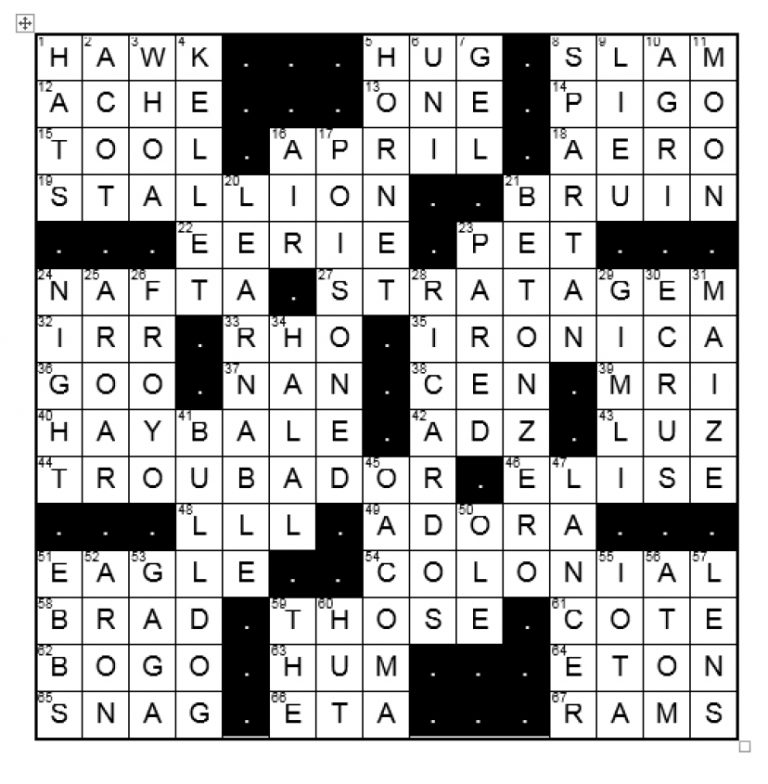

The New York Times recently shared that the term has been used 438 times in its crossword, but that “descriptions of the word have gone from ‘flirt,’ in 1942, or ‘gaze amorously,’ in 1994, to ‘It’s not a good look’ or ‘eye lewdly,’ in 2021.” Clues for perennially popular answers can evolve as well.


It’s in these editorial workshops that the NYT Games team asks itself, when does a word or bit of slang or cultural reference become puzzle-worthy? Those creating puzzles tend to consider whether the term has longevity (or will go the way of, say, “tubular”) and what portion of their audience can reach the right answer from reading a clue.Įditors at the Times have long checked newspaper and magazine archives to test a word’s popularity and now take online search results and social trending topics into account, too. The editors have an opportunity to talk about their point of view when editing puzzles, so it wasn’t just trying to replicate what Will would do.” “It’s a really good chance to equalize the playing field. The crossword editors also now meet for editorial workshops where the entire team gets to “argue and philosophize” about puzzles, Mason said. (The first edition gave the story behind the answer to “Italian cheese city.”) Mason has also debuted a testing panel that gives feedback on puzzles and has described the panel as “a vibe check” that - aside from looking for typos and fact checking, done separately - is particularly interested in whether the puzzle is fun for a diverse group of people to play. Under Mason, the Times has also launched a new weekly column to give insight into puzzle answers new, old, and evolving. Instead, applicants can submit “a theme set with theme clues,” a partially filled 15×15 grid, and a grid as small as 7×7. Mason noted the barrier to entry and ensured the fellowship application does not require a fully-constructed puzzle.
#PAST NEW YORK TIMES CROSSWORD EDITOR PROFESSIONAL#
The learning curve for potential constructors can be steep, and the digital tools most popular with professional constructors can be costly and user unfriendly. If we see a really cool puzzle with new kinds of clues and fills and publish it, hopefully that encourages people to give us more like that.” “And we’re going to be able to model certain things. “I think that in mentoring these constructors, we’re going to learn stuff, too,” Mason said. The fellowship, she hopes, can help kick off a new pattern. “It was becoming clear that people were sending us the kinds of puzzles they thought would get in rather than really pushing the limits and trying to show us new things,” Mason said. Constructors seemed to have a fixed idea of the kind of puzzles that The New York Times chose to publish. Part of the diversity problem was self-perpetuating, Mason saw. The New York Times, even while interviewing Mason for the job, had acknowledged it need to change. Mason said creating a fellowship has been on her mind from the very beginning.

The new constructor fellowship is the brainchild of Everdeen Mason, who joined the Times as editorial director for Games almost exactly a year ago. Only those who have not yet had a puzzle published by The New York Times will be considered. The chosen fellows will receive three months of mentorship from one of five puzzle editors - that’s Liu, Bennett, Joel Fagliano, Sam Ezersky, and the legendary Shortz - as they work to construct a puzzle for general submission. “There’s an expectation that the person solving your puzzle looks like Will Shortz.” (Until editors Wyna Liu and Tracy Bennett were hired in 2020, the Times puzzle team consisted of three white men.) March 12, 2021“You’ll get a rejection from the Times saying ‘This is not something that the average solver will know,’ which carries with it this connotation that an average solver is a white man in his 50s,” one crossword constructor told me last year.


 0 kommentar(er)
0 kommentar(er)
